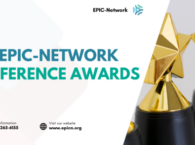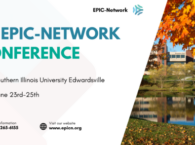Memorandum of Understanding between the U.S. Environmental Protection Agency and EPIC-N Signed!

A Memorandum of Understanding (MOU) between the U.S. Environmental Protection Agency (EPA), Office of Research and Development (ORD), and the Educational Partnerships for Innovation in Communities Network (EPIC-N) has been signed.
The MOU provides a foundation for:
1) advancing campus-community partnerships to support environmental, public health, and revitalization efforts; and
2) researching, understanding, and communicating best practices of communities in supporting local resilience.
ORD is the scientific research arm of EPA. Its leading-edge research informs decisions and supports the emerging needs of EPA stakeholders. ORD is working to answer the question, “How do we meet today’s needs without compromising the ability of future generations to meet their needs in ways that are economically viable, beneficial to human health and well-being, and socially just?” while supporting local communities seeking to become more sustainable.
EPA’s mission is to protect human health and the environment for present and future generations. Local communities often lack capacity to manage issues of concern such as pollution and natural resources. EPA recognizes the need to identify creative solutions and leverage partnerships to assist at the local level. ORD works with EPA to assist local communities in achieving their sustainability and resilience goals. EPA is interested in the EPIC Model as it allows communities to tap into the capacity within universities. The Network is also a venue to share methods to support local sustainability, resilience, and revitalization.
The EPIC Model brings together the greatest academic resources to tackle community challenges. The results are felt immediately with lasting transformative effects. Solutions are created that might never be imagined through traditional structures. There is greater public goodwill toward the university and real-world learning for students and meaningful change is felt throughout the community.
Such efforts have benefited community partners in countless ways, including the following:
- Salem, Oregon, leveraged student deliverables to complete a market study for hauled waste. The city then received over $3 million in incentives to expand the cogeneration facility at Willow Lake to power more of the plant. Read the full report.
- The University of Maryland’s Partnership considered coastal community sea level rise and storm surges. Students provided recommendations for preserving quality of life and the economic base. Read the full report.
- The City of Lemon Grove, California, and San Diego State University realized an 800% ROI. A sample of benefits to the city included GIS mapping of urban assets, an urban agricultural analysis, and a downtown development plan. Read the full report.
These are only three of over 225 partnerships completed by EPIC programs demonstrating project designs, solutions, and recommendations. Strong EPIC programs provide an avenue for ORD to:
1) Present its tools, methods, and technical models used in real-world settings and to receive feedback from end users;
2) Work in partnership to support community environmental, public health, and revitalization goals; and,
3) Access project results to research and communicate local resilience best practices.
Throughout the term of the agreement, EPIC-N intends to:
- Provide EPIC programs with information about EPA methods, models, tools, and resources; and
- Provide EPA with access to data from completed EPIC partnership projects as well as current and future projects (e.g., in the form of a database).
EPA intends to:
- Convene interested municipalities and universities to learn about the EPIC-N model;
- Connect federal colleagues with campus-community partner projects within their jurisdiction;
- Share information about EPIC-N, its model for campus-community partnerships, and its training workshops with diverse stakeholders through a variety of avenues (e.g., listservs, webinars, etc.);
- Provide EPIC-N and its Universities access to measurement methods, models, tools, and resources; and,
- Collaborate on an EPIC-N project database, highlighting opportunities and advancing local resilience.
It is the intent of EPA and EPIC-N that:
- Each party strengthens the relationship in support of advancing sustainability, resilience, and well-being;
- Staff share knowledge of potential EPIC partners, information, and resources to advance partnerships; and,
- Staff work to research and communicate community resilience, learning from EPIC partnerships.
As a result of this MOU, EPA and EPIC-N are now working together on new ways to highlight Community Resilience through the dimensions of:
- Health & Wellbeing
- Leadership & Strategy
- Economy & Society
- Infrastructure & Ecosystems
In the coming months you will see communication featuring the projects that have improved communities. The new awareness will celebrate accomplishments and educate our partners. This increased communication will come through social media, newsletters, webinars, and more.
Stay tuned,
Marshall Curry, Program Manager, EPIC-N
Laura Bloch, Sustainability Adviser, Region 9
José Zambrana, Senior Science Advisor, Center for Environmental Measurement & Modeling, Office of Research and Development, U.S. EPA


